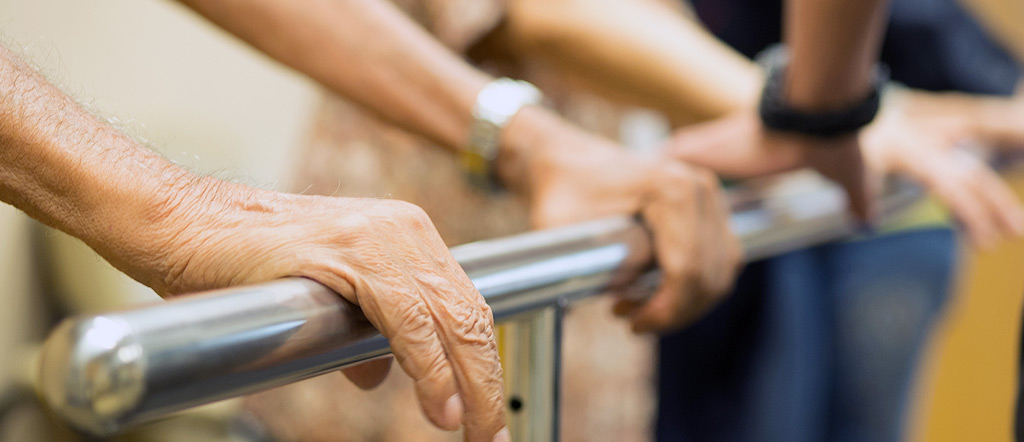
As per the International Classification of Diseases, Musculoskeletal Disorders/ MSD include any disorder or injury that affect the musculoskeletal system, i.e bones, muscles, joints, discs and the associated tissues like ligaments and tendons. The problems in MSD predominantly impact the body movement and are known to be the second largest cause of disability worldwide.
With age, the bones become fragile, the cartilage resilience decreases, the ligaments start losing their elasticity, the muscle strength reduces and thus, the severity of these musculoskeletal disorders increases. Therefore, the prevalence of MSD is significantly higher in the elderly population (aged 65 years or above).
Below are the common bone health issues that appear in the aging population.
Osteoarthritis (OA)
Among people 65 and above, OA forms the most common joint disease. This disorder results from the wearing and breakdown of the articular cartilage (covering and lubricating the end of bones).
Its symptoms include:
- Stiffness, swelling, and pain in a particular area
- Loss of flexibility,
- Discomfort in moving the joint.
Even in old age, the following factors can aggravate and worsen the deterioration of the joint cartilage:
- Genetics: Some people are genetically predisposed to OA.
- Gender: Women have a higher risk of OA.
- Weight: Obese people have a high risk of developing OA.
- Joint Injuries: When injuries occur in and around the joints, they become prone to OA.
- Level of Mechanical Pressure: When a high level of mechanical pressure falls on one particular joint, it develops a greater risk of OA.
Osteoarthritis can affect any joint of the body, but most commonly occurs in the knees, neck, lower back, hips, small joints of the fingers, as well as the base of the big toe and thumb. Although there is no cure for OA, weight loss, regular exercises and physiotherapy can help to decrease the progression of the disorder.
Osteoporosis
The bone density is at its peak in the late 20s and after age 35, the rate of bone tissue formation decreases. As age progresses, the bone mass starts reducing, and the bones become weaker and porous. When the rate of deterioration of the old bone tissue highly exceeds the formation of the new ones, osteoporosis results.
In severe conditions, the bones become so brittle that even minor strains like coughing, minor knock or fall lead to breakage and fractures. Such Osteoporosis-associated breakages mostly occur in the hip, wrist and the spinal vertebrae.
Apart from such breakages, there are no visible signs and symptoms, therefore a patient with this disorder might not even know about their condition until they suffer from a fracture.
Osteoporosis shows a predominance among older women who have passed their menopause, as the estrogen (the hormone responsible for rebuilding bones ) declines rapidly in them.
Males are also affected, with one-third of all the hip-fractures occurring in men.
Oral intake of Vitamin D and Calcium and regular exercise can lower the risk of Osteoporosis.
Osteomalacia
Osteomalacia is one of the most common osteometabolic disorder of the elderly and is often associated with osteoporosis.
Osteomalacia is characterized by the softening of bones, especially due to the lack of Vitamin D. Vitamin D helps in the absorption of Calcium in the stomach and maintains phosphate levels, thus, helping in bone formation.
Like osteoporosis, people with osteomalacia can also fracture their bones easily and show increased muscle weakness, especially in the area where the muscle attaches to the bone. Another common symptom is bone pain, mostly in the hip, which often spreads to ribs, lower back, pelvis, and legs.
Oral supplements of Calcium, phosphate and vitamin D are often prescribed as a first line treatment of osteomalacia.
Sarcopenia
After age 40, the muscles start to lose their mass and function, and more than 50% of muscle mass is lost by the time a person reaches 80. Since muscles account for almost 60% of the body mass, sarcopenia forms one of the biggest causal factors of fall, frailty, and fractures in older people.
As people with sarcopenia suffer from loss of stamina and increased weakness, their physical activity reduces, which further shrinks their muscle mass. Other factors like damage to the nerve cells that send signals for movement to the muscle, reduction in hormones like testosterone and growth hormone and reduced calorie intake can also lead to sarcopenia.
The primary treatment for this disorder includes exercise, especially strength training and resistance training.
Conclusion
Untreated MSD result in fractures and falls, which form the most common cause of injury in elderly patients. Thus, it’s important to consult an expert orthopedic doctor, like Dr. L Tomar, who can treat your condition in the most effective manner and stop it from aggravating further.
Recent Posts
- Deciding Between Total Knee Replacement and Minimally-Invasive Partial Knee Replacement
- Long Term Impacts of Arthroscopic Surgery
- What to Expect After a Joint Replacement Surgery?
- Ways to Avoid Risks Post a Knee Replacement Surgery
- Five Things to Know If You Are Planning a Hip Replacement Surgery
- The Rising Bone Health Issues in Aging Population
- Knee Replacement Advancements Leading to Better Patient Satisfaction
- Simultaneous bilateral hip replacement more satisfactory and better rehabilitation
- Knee replacement as successful as Hip replacement
